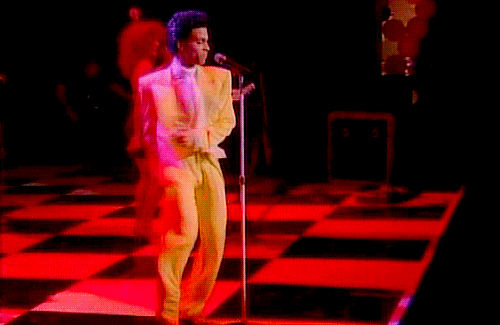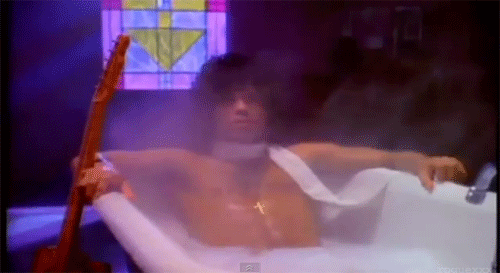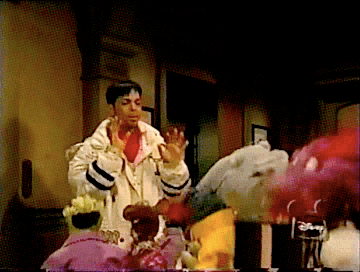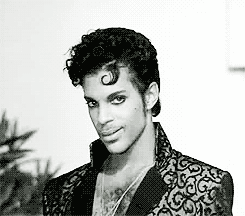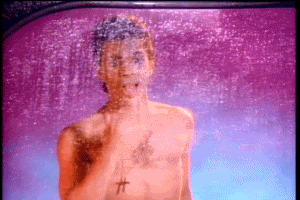E. Kristin Anderson's Blog, page 6
September 3, 2015
Banned Books Month: Guest Post from Jennifer Walkup: Books Don’t Hurt People; People Hurt People
This summer I was lounging at a friend’s town pool. Like most summer leisure places, many people were lying around, soaking in the sun, kids playing and throwing tantrums, water from Super Soakers whizzing by overhead, and yes, sunbathers reading. On my way to the snack bar, I saw a young woman reading a book with a familiar lime-green cover, THE PERKS OF BEING A WALLFLOWER. I bit back a bittersweet smile at the book I read and loved years ago, a book that gave me so many different types of serious feels.
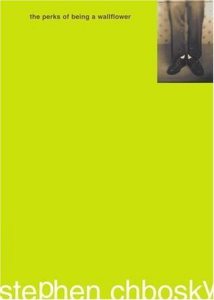
MTV Books, February 1999.
A few moments later, on my way back to our seats, we passed her again, and I saw her, deeply reading, and wiping away tears.
Now, as a voracious reader, I’m no stranger to emotional response to books. Books have made me fall in love and fear the dark and my own shadow. They’ve made me ache with nostalgia and cringe and seethe at unfair treatment. But, mostly they’ve helped me relate to characters so much that I’ve lost myself in them. And sometimes they’ve helped me work through my own troubles. I’ve fallen into the pages of a book and learned something about someone else, something that gets tucked deep inside me. I’ve fallen into a book and learned so much about myself.
So as I settled back in to my poolside seat, I started to think about THE PERKS OF BEING A WALLFLOWER and all the reasons someone could have an emotional response to a book.
Books can be catalysts for change and understanding.
Books can heal.
Books can comfort.
Books are life!
Of course I have no idea why that particular girl was crying while reading that particular book, but I do know that novel has been challenged many times over, and banned in many places.
We all know the reasons why the powers that be ban books, but have you ever stopped to think what these same books offer us, the things that banning books will take away?
Letting victims know they’re not alone.
This could be true for so many of the books on the banned book list. It seems sexual situations—in particular, sexual abuse—sends the powers that be racing for the ban it button. But gosh, what could be further from what victims need? Is isolating readers who may see themselves and their situation in books really what we want? Or do we want them to feel understood and less alone?
Fostering empathy.
It’s been proven in numerous studies like this one and this one and this one for even really young kids that reading increases emotional understanding. Children who read understand their peers, their parents, and generally the emotions of other human beings better. So wouldn’t taking away a book that deals with heavy, emotional issues, even ones fraught with trauma and distasteful situations, be a disservice to people everywhere? Not only does banning books isolate victims, but it also cuts off everyone else, too, people who may learn what it’s like to be friends with, or support, or simply understand someone else.
Shrinking our world.
When we ban books because their content doesn’t fit with our ideological worldview, we shrink our world. News flash—the world is full of things we wish didn’t exist. Turn on any newscast, or scroll through your Facebook news feed or Twitter stream on any given day, and you will be assaulted with real-life terrors. But we can’t ban those horrors and occurrences, so why not arm the next generation with the understanding, care, and empathy they need to take the world head-on, to challenge the things that do matter – not books, for Pete’s sake, but the truly bad things in the world. Why not educate kids through stories, through characters that are real people to their beloved readers, on the things that they may come across in life, on the people they may need to understand? Why not show kids the broad spectrum of life in all the good, the bad and, yes, the ugly?
We cannot shield our children from life. The world, in all its splendor and ugliness, will keep turning, and it will happen around our children, and to our children, whether we ban books or not.
So shouldn’t we teach them before it happens?
Shouldn’t we show them what life can do? The intricacies of relationships, the pressures they may face, even the large-scale disasters that may occur? Shouldn’t we teach them how people make it through, how they weigh choices, what consequences they may face? Shouldn’t we show them what caring individuals look like, give them a vocabulary for their emotions and the emotions of others, and explain what thoughtfulness and friendship and family mean? Or how to simply recognize the different people and different experiences and situations they may encounter?
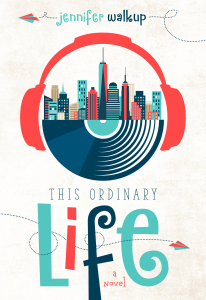
Luminis Books, October 2015.
Reading makes our children more prepared, more well-rounded, better people, and shows them how to communicate and forge truer friendships. It will make them sympathetic, empathetic, and more understanding.
Books are a worldview at a safe distance.
Books don’t glamorize things in the way book banners would have you think they do.
Books don’t offer your child drugs or cigarettes. They don’t teach your child how to have sex or how to say bad words. Books don’t mug your children, sell them narcotics, make them violent, or rape them when they aren’t looking.
They may discuss these things, they may even show these things in uncomfortable detail, but all they are really doing is offering a window into reality, into the world our children are growing up in.
Like it or not, these things happen all around us—and around our children. We can’t stop the bad things in the world; all we can do is enlighten teen readers and show them there is a way around and through the bad things in life.
Books don’t hurt people. People hurt people.

Jennifer Walkup.
Award-winning author Jennifer Walkup is most often found writing, reading, and spending time with her husband and young sons. A member of SCBWI and RWA, Jennifer also works as an editor and creative writing instructor, and is an advocate for Epilepsy awareness. THIS ORDINARY LIFE is her second novel. She can be found at: www.jenniferwalkup.com





September 2, 2015
Banned Books Month: Guest Post from Tod Davies: The Importance of Story
A story is more than just a tale told to pass the time, an entertainment frivolously cavorting on the sidelines of real life. For Story is Real Life itself, literally. Stories are the atomic particles of the world as we perceive it, the world that we build ourselves, every moment, in the stories we tell about and to ourselves.
As a wise person once said: “It had to be believed to be seen.”
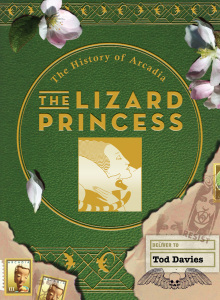
Exterminating Angel Press, November 2015.
Where do these stories come from, then? The stories that make up, delineate, define our world? From a huge, perhaps infinite, storehouse, deep below our collective surface life: a vast sea of the unconscious.
In Herman Melville’s MOBY DICK, a little cabin boy falls overboard while the Pequod crew is in pursuit of the whale. They have no time to stop for him, but return the next day to find him floating in the midst of an endless sea. And he has gone completely mad.
Melville clearly means the poor boy has fallen into that eternity of possible stories, into a vastness he can’t comprehend, let alone make any sense of, far from any small story that will establish him as a subject in the midst of endlessness, while the world he knows fights to subdue a huge symbol rising up from that very deep. That fear is in all of us, I think, and rightly so. Lurking behind each painfully built up individual personality is an eternity of unconsciousness. Of symbols still unknown, still waiting—sometimes not so patiently—to be brought to the surface and revealed. Of desires, and instincts, and passions we have yet to let into our selves, and through our selves, into our cultural discourse.
Of fearsome symbols we attempt to capture and kill, through our fear, and the rage that comes from feeling that fear.
For what draws these stories up from the deep are feelings. Strong feelings of whatever kind: Desire. Wonder. Anger. Fear.
We’re right to be afraid. We are, as individual people, so much smaller than the enormous field from which we and our stories spring, where so many (it may be an infinite amount) of contents yet unimagined, let alone expressed, lie, waiting to be born.
And I think that is what fuels the banning of books: the fear of our own smallness in the face of the literally unimaginable hugeness from which we come.
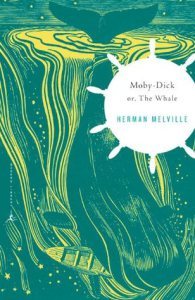
Modern Library Edition, October 2000.
I ponder now why books are so quickly rejected and banned—even MOBY DICK, banned in the 1990s by a Texas school board for being “against community values.” Most of all, I ponder the almost hysterical tone of the bannings, both those from what we call the ‘right wing’ as well as those from the ‘politically correct’. In both cases, it’s as if these interdictions defend against an enormous, unfathomable space that threatens to engulf us, that must be fought off at all costs…even at the cost of reasoned debate.
Maybe especially at the cost of reasoned debate. And this, more than anything else, proves what depths of feeling rise up in response to these books, what enormous fears fuel what enormous, at times uncontrollable, rage.
I talked this over with a fellow writer who idly remarked, “I wonder why school districts continue to give books free publicity by banning them.” Then ruefully, “I just wish someone would ban one of mine!” Of course that little joke points to the heart of the problem. If a book doesn’t arouse strong feeling, it’s not going to be banned. It’s the strong feeling that’s at the center of the mystery. The desire to fend off the strong feeling. The fear that the strong feeling indicates some wider unwelcome truth.
The strong feeling that suggests a different way of looking is knocking impatiently at the door to consciousness, waiting, even demanding, to be let in.
A culture needs gatekeepers, sure. It needs to preserve its integrity lest it disappear entirely into the vastness of an ocean stretching eternally in all directions. Some ideas in their stupid venality are not a good addition to the general conversation. Still they may have to be put up with for the sake of what other treasures can be found nearby.
For there are riches in that deep unexplored realm, for those brave enough, and wise enough, to seek them. New symbols. New ideals. New ways of being that have been kept out of the old story in order to keep that story the way it has always been.
We want to be sure that we’re not fending off exactly the same symbols that might be most valuable to us in the future. That the horrifying mysteries that seem impenetrable to us now may not turn out to be saving truths tomorrow.
We need to trust ourselves a little more, and observe ourselves, too, so that we know a little more clearly why we act as we do. What we don’t want is to pen ourselves into a deceptively safe box with no window looking out onto a larger potential world. Especially not now, at this point in our human history, when the old stories, the old ideas are clearly not working for us as well as they have in the past. Now more than ever we need to have a care: when an idea, any idea, provokes in you a strong feeling of revulsion, ask where that feeling comes from. Make sure it doesn’t come from a fear of opening yourself to a new, larger world, a fear of being swallowed up in a sea of new ideas.
Make sure it isn’t a new Story that frightens you into a rage to destroy it before you understand its true nature. For the Great White Whale that Ahab chases may mean something far different than the destructive force of an evil nature it is to the men on the Pequod. It may even provide some saving truths that people on land desperately need.
It’s a big responsibility, the making of, and the responding to, Story. For it’s the interplay between Story and Feeling that forms the Self. And through the Self, the World—our World—at large.
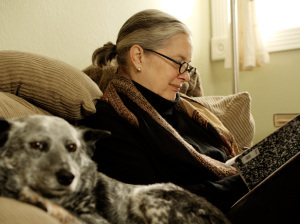
Tod Davies.
Tod Davies, editor of indie Exterminating Angel Press, is the author of The History of Arcadia series: SNOTTY SAVES THE DAY, LILY THE SILENT, and the soon-to-be-released THE LIZARD PRINCESS (November 2015), as well as her cookbook/memoirs in the Jam Today series. Unsurprisingly, her attitude toward publishing is the same as her attitude toward literature, cooking, and, come to think of it, life in general: it’s all about working with the best of what you have to find new ways of looking and new ways of being, and, in doing so, to rediscover the best of our truly human values. Davies lives with her husband, filmmaker Alex Cox, and their two dogs, in the alpine valley of Colestin, Oregon.





September 1, 2015
Banned Books Month: Guest Post from Philip Gulley: On Humans and Censorship
I’m not sure when the first book was published, but I’m almost certain that when it was, a self-appointed guardian of the community read it, was incensed, and put a match to it. Had I been living then, and seen the flames eating away at the words, I would have been all the more eager to read them. That has always been my pattern. When I was 14 and my mother told me never to look at Playboy, I couldn’t wait to get my hands on one.
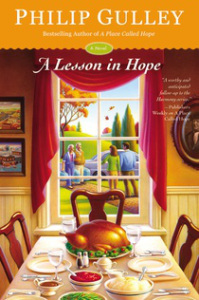
Center Street, September 2015.
To have one’s words condemned and burned is an exhilarating experience, especially if the criticism spurs sales, which is what happened to me when, after writing four books heavy on charm and nostalgia, I began dabbling in theology, co-authoring a book with Jim Mulholland, in which we gleefully, and may I modestly say masterfully, poked holes in the notion of hell. The book was called IF GRACE IS TRUE, and before it was even published, the critics boiled out of the woodwork. The kinder among them said they were praying for me. It is one thing to be prayed for when one is dying of cancer, and another thing to be prayed for when the one praying wants your mind to be changed and is enlisting God’s help to do it.
As I said, those were the kinder responses. Others, faithful Christians all, called for my horse-whipping, the revocation of my pastoral credentials, and my expulsion from the church. One lady rushed to her public library, checked out the book, burnt it, and sent me the ashes. It was, I suspect, the highlight of her censorious life, and I was so pleased to have supplied the opportunity that I mailed the library a new copy so she could do it again.
I escaped the horse-whipping, though the possibility fascinated me. Not the anticipation of pain, but the mechanics of the deal─the accusation, the charges filed, the trial, the finding of guilt, the sentence passed, the procurement of a horse whip and whipper, the punishment itself on our town’s square with my family and friends forced to watch, lest they also be tempted towards heresy.
It was on that same town square that I had gathered with my fellow citizens in 1968 to hear Michael Landon, of Bonanza fame, deliver a rousing speech on freedom, do a rope trick or two, and sign autographs.
I checked with our county historian to see if there had ever been a horse-whipping in our county and was surprised to learn one had never taken place. I would have been the first, which would have secured my place in history. A hundred years from now, my town, awash in post-horsewhipping guilt, would have erected a statue in my honor. We authors are fiends for fame and will take it any way we can get it, even if it kills us.
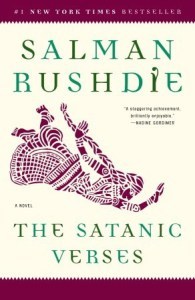
Random House, Paperback Edition, March 2008
When Salman Rushdie wrote THE SATANIC VERSES and was condemned to death, in absentia, he hid from the wingnuts who wanted to kill him, which was the worst possible thing he could have done. Had he let himself be killed, his fame would have been assured. Instead, he lived in hotels, moving from one city to another, eating bad food, wearing wigs when he went out, and maybe even wearing miniskirts to dupe his accusers, who wouldn’t have been able to look at him, thinking he was a she. Had they looked at him when he was a she, they would have gone straight to hell, according to their religion, which would have been not only ironic, but also hysterical and the best revenge Salman Rushdie could have taken.
While writing IF GRACE IS TRUE, I prayed daily that Pat Robertson would be so incensed he would issue a death warrant against me, my own personal fatwa, rocketing the book into the stratosphere. Alas, he did me no such favor. Instead, I had to endure poorly written letters telling me I was the worst human being who had ever lived, which I corrected and returned, for free, without even being asked. Would the world’s worst person do that? I think not.
I’ve written fifteen books since then, all of them delightfully seditious in their own way, for I have never enjoyed a book whose sole purpose was to confirm my worldview. I like the book that stretches, that teases, that goads. Should that same book offend me, so be it. I would rather live in a country where a million readers were scandalized, than in a country in which even one writer were made to pull back the reins in fear.
PHILIP GULLEY, a Quaker pastor, has become the voice of small-town American life. Along with writing FRONT PORCH TALES, HOMETOWN TALES, and FOR EVERYTHING A SEASON, he is the author of the Harmony series of novels. Gulley lives in Indiana with his wife, Joan, and their sons.





August 25, 2015
7 Questions I Always Ask +1 with Mari Mancusi, author the SCORCHED series
Today for 7 Q’s I have Mari Mancusi, author of the Blood Coven series, GAMER GIRL, and her latest series, SCORCHED. The newest book in the series, SMOKED, comes out in September, and readers are waiting with bated breath. Here’s what Mari has to say about her books:
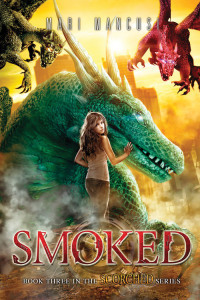
Sourcebooks Fire, September 2015.
E. Kristin Anderson: What was the first spark of inspiration for your latest novel?
Mari Mancusi: The film Reign of Fire, which is a little known post-apocalyptic dragon film starring Christian Bale and Matthew McConaughey. I was blown away by the concept (if not the execution) and wanted desperately to write a book like that someday. But, of course, I had to give it my own spin. So I added time travel, something I have done a lot of in my writing career, and brought the boys from the dragon apocalypse back to present day to try to stop it. So think: Terminator meets Reign of Fire and that’s the inspiration for the Scorched series.
EKA: What kind of planning do you do before you start writing?
MM: I usually have a detailed synopsis that I use as a guideline while writing. But as for digging into the actual manuscript? I just need a good first sentence. Once I have that first sentence, things start flowing from there.
EKA: If you could have lunch with any writer living or dead, who would it be?
MM: Cory Doctorow and we would talk Disney and videogames the entire lunch.
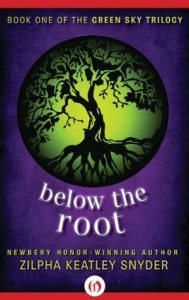
Open Road Media, Kindle Edition, December 2012.
EKA: What is the first book you remember reading and enjoying as a young reader?
MM: I loved Zilpha Keatley Snyder books. She wrote paranormal middle grade books that were both fascinating and dark. I especially loved BELOW THE ROOT, her dystopian series, which was turned into a video game when I was young.
EKA: If you could go back and time and tell your teen self ONE THING AND ONE THING ONLY, what would it be?
MM: The relationship is OVER. I mean, really, stop pining—he’s never coming back! And besides, better things are ahead!
EKA: If you haven’t had a book challenged or banned, would you want this to happen to you? Why or why not?
MM: I have never had a book challenged or banned, but if I did, I would be proud that my book had struck a chord and made someone uncomfortable. While I’m a huge fan of books as simple entertainment and don’t feel every book has to teach a lesson or be “important” in some way (junk food books can be really satisfying!) I do think that it’s important that kids have access to novels that delve into darker realities and may speak to their personal experiences and help them realize they’re not alone.
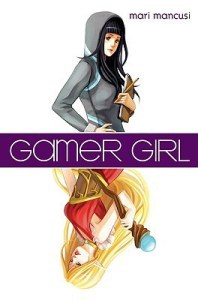
Dutton Books for Young Readers, November 2008.
EKA: What kind of book do you really want to try to write, but haven’t ever attempted? And what do you think is holding you back?
MM: I’d love to write high fantasy, but it’s an intimidating genre because there are so many amazing voices already published and I’d have to find a way to give it my own personal spin. But as someone who loves to read in the genre and adores everything medieval-esque, I think it would be a blast to try.
EKA: You’ve written and published a lot of different book series. What do you think the most important element is when it comes to writing a series, in order to keep reader interest from book to book?
MM: Compelling characters that people want to keep reading about. No matter what the cool plot or setting or fast pace or whatever—it all comes down to the characters who jump off the page.
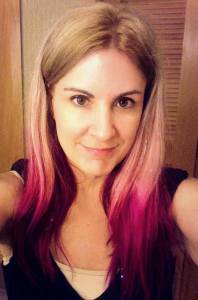
Mari Mancusi.
Mari Mancusi is a two-time Emmy award-winning television producer and author of novels for adults and teens. A graduate of Boston University, she now lives in Austin, Texas with her husband and young daughter. When not writing or producing she enjoys traveling, snowboarding, reading fantasy novels, and her favorite guilty pleasure: video games.





August 8, 2015
Another Prince chapbook? Yes. Yes that is happening.
YAAAAASSSSSSSS!
Don’t worry. I’m not off the deep end. I mean, I don’t think I am. I just really really really keep finding myself inspired by Prince during tough times and earlier this summer I wrote a long poem, in 17 parts, influenced by both going through an acute reaction to some medical issues and the Prince song “17 Days” (which is the B-side to “When Doves Cry,” for those of you who might not be like completely obsessed).
I’d heard the song many times before I heard it for what I feel like was the first time at AWP in Minneapolis at the Prince Purple Poetry Party, where poets read Prince poems and we danced to Prince music and I met lots of awesome people and heard poetry that I can never forget. And when “17 Days” came on, it was this revelatory experience. I think we all have that at some point with a song.
Anyway, this long poem. I wrote it. I subbed it around.
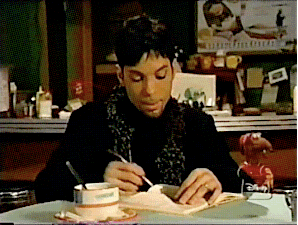
Thing that happened:
Editor: Did you write this at AWP?
Me: Actually I wrote this three days ago in a manic rage.
Honesty is the best policy, when someone is thinking about publishing you. I think. Anyway, I got some great feedback from both critique partners and publishers that said “almost” (including the editor who asked me when I wrote the piece — THANK YOU). And then I revised and revised and sent it to Choose the Sword Press who claim to have cigar-smoking unicorns on staff and, let’s be real, Prince and unicorns kind of go hand-in-hand.
I don’t have a release date yet. But I’ll let you know when I know. 17 DAYS the chapbook is something of a B-Side, or perhaps a sequel, to PRAY, PRAY, PRAY (coming out from Porkbelly Press in in October).
I feel very lucky to be publishing another book, especially with Choose the Sword, especially on a topic that I hope I haven’t exhausted (a full-length things-I-wrote-to-Prince collection may be inevitable at this point), especially just as a human person who is having some great opportunities in her life right now.
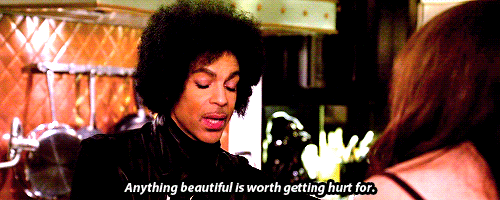
Sometimes beautiful things come from the darkest places. Thanks to Prince (and of course all of my people, poets and otherwise) for helping me find the much-needed silver linings.





July 24, 2015
GODDESSMODE IS HERE! An Interview with August Smith of Cool Skull Press
So when I first heard about the anthology that Cool Skull Press was putting out an anthology of video game poems, all written by women and non-binary authors, I was so in. Except I missed the deadline. And then they emailed me and were all like “can you send us some things?” and I was all like “YAAASSSS” (except, you know, super professional) and now I get to say that I’m in GODDESSMODE, which is so very excellent (I’ve seen the insides and everything) and I absolutely cannot wait for everyone else to get their hands on it. Meanwhile, I thought I’d check in with August Smith over at Cool Skull Press to see how this fantastic anthology came about. Here’s our interview.
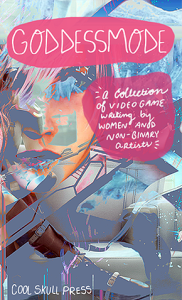
Cook Skull Press, July 2015.
E. Kristin Anderson: What attracts you to video games as a subject for poetry? This isn’t Cool Skull Press’ first video game poetry book.
August Smith: That’s a difficult question because I feel like the answer is very nebulous. I can pick out a few standout reasons, though. On one level, it’s really just a form of nostalgia-mining for me. I get to revisit these characters, words, landscapes, and ideas that I spent a lot of with as a child, and somehow I find that pleasurable and emotionally resonant. I think the impulse is similar to the impulse behind people writing fanfiction– there’s something powerful in taking these expansive fictional universes that are outside of my control and modding them in any way I like. And readers that were raised on these games have an easy emotional access point with my video game work. I received so many emails from people who were excited about my MARIO KART 64 chapbook because they used to spend hours playing it with their siblings so many years ago. There is an emotional connection to these games and it’s not superficial.
On a more philosophical level, I like to think of video games as small self-contained universes, operating by their own rules, existing outside time and physical location. Video game poetry is basically ekphrastic poetry, and yet it feels fundamentally different from writing about paintings or songs or movies because we, as players, inhabit these games, we give them a soul, and we effect the way these universes work. Thus, we can think of games as small and easily-digestible metaphors for our own universe, and it’s at that intersection that I like to explore.
EKA: Tell me about the title GODDESSMODE. How did it come about, and what does it mean to you?
AS: The title GODDESSMODE is a play off the game trope “godmode”, which is usually a cheat or power-up that grants invincibility. When you activate “godmode” in a game, your usual reaction is to start fucking everything up. It allows you to charge into the middle of huge angry mobs or walk across lava and spikes or throw grenades at your own feet and walk away unscathed. So I think the name works as a simple analogy for a collection that aims to face its opposition head on and without trepidation.
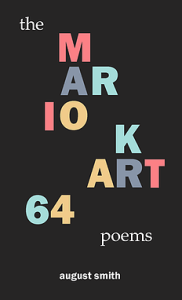
Cool Skull Press, February 2015.
EKA: What were your goals when you decided to put out a call for submissions for this book?
AS: For a while before Cool Skull Press even started, I had the idea to do an anthology of poetry and writing about video games. After I got the ball rolling on the press and started connecting with other similarly-minded publishers, I quickly realized that this idea has been done 1) multiple times by other presses, and 2) better and more thoroughly than I ever could (for example, Sidekick Books has some absolutely killer video game poetry anthologies). This realization occurred at the same time the gaming community at large was really struggling with gender critiques: the hideous harassment campaign against Zoe Quinn, the death threats against Anita Sarkeesian, etc. These two things became the impetus for the collection.
The real driving goal behind the book was to provide a platform for a variety of voices and approaches. If non-male individuals’ voices are being suppressed in some way, the best way to combat that (it seems to me) is to create a place/space/platform where their voices are encouraged. For this reason, I didn’t necessarily want every piece in the book to be explicitly about gender (though many of the best pieces in the collection are), but instead I wanted a wealth of subjects and styles. Your Nintendo Power erasure poems are a perfect example, E.!
EKA: What was the curation process like? You must have gotten a lot of really interesting submissions on this topic.
AS: Well for starters, I felt a bit weird about curating this collection myself, since I’m a dude. That seems a bit evil-overlordy, like, “Here’s a platform for your work! But I’m the guy and I get to pick what goes in the book!” So I pulled together some editors and friends of mine (E. E. Scott, Catherine Bailey, Ben Rogers, Dawn Gabriel) and gave them the first pass at the submissions. Then I boiled their responses down into the final selection.
We definitely did get some interesting submissions. We got a couple of submissions that were actual games, which got me thinking about how to perhaps marry the anthology/literary journal release model and independently created video games. Maybe that’s somewhere in Cool Skull’s future.
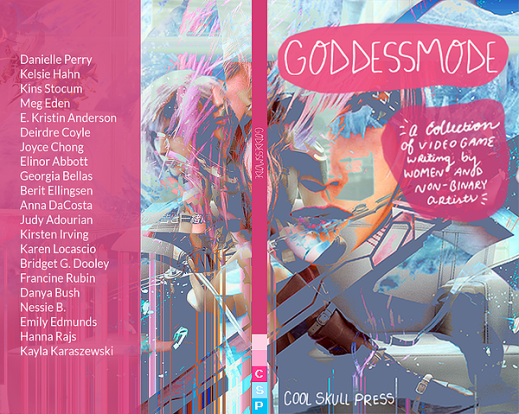
Cool Skull Press, July 25.
EKA: The gaming world is often NOT a safe space for females and non-binary individuals. What do you think can be done to change this, both for hardcore gamers and the casual player?
AS: Again, it’s hard for me to say since I don’t think I’m an expert on this topic and also I’m a dude, which affects my perception of the situation at hand. What I can say is this: if “gamers” want video games to be considered art and taken seriously (which, it seems, many of them do), the field has to be open to critiques, be they feminist and gender-related critiques, aesthetic critiques, Marxist critiques, I don’t care, whatever. This does not mean you have to agree with said critiques. And in fact, if you don’t agree with them, explore the reasons why you disagree like a civil human being. But to violently suppress them with death threats, slut-shaming, whatever, that’s just being reactionary, and in the end you’re going to end up as villains on an episode of Law & Order.
I feel like whenever there is a tangible shift in inclusion, there is always a strong and reactive pushback. Video games, especially over the past, say, 7 years, have really risen in prominence, artistic intent, and general userbase. So now we’re seeing the pushback from those deeply entrenched in that world. And like anything, this pushback will gradually fall by the wayside as gaming is woven into the fabric of our cultural narrative.
It’d be great to expedite that process.
EKA: I’d love to hear more about the striking cover art. How did you choose an artist, and did y’all collaborate to come up with this beautiful look? What were the goals when y’all were creating this cover?
AS: One of the first submissions we received was a collection of visual art from a woman in Sweden named Hanna Rajs Lundström. She’s written a book about Beyoncé and a book about Buffy the Vampire Slayer; just, in general, a really cool artist. The cover image is one of her submissions, and I immediately loved how it somehow gives off the feel of video game cover art while remaining abstract and glitch-like. It just seems very Cool Skull. The lettering was done by an artist friend of mine, Kayla Karaszewski, and she was an absolute pleasure to work with. It all came together very quickly and intuitively. Kayla and I are going to be working on some Cool Skull Press t-shirts next, I think.
EKA: How did you choose the charities to support? And have they been at all involved with the creation of the book?
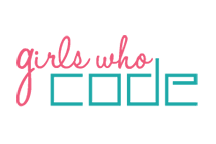 AS: I knew I wanted to support Feminist Frequency because Anita Sarkeesian is really enacting some cultural changes that I support. She’s really ruffling some feathers, as it were. I also wanted to unambiguously define this book in direct opposition with the kind of people behind the whole #gamergate thing.
AS: I knew I wanted to support Feminist Frequency because Anita Sarkeesian is really enacting some cultural changes that I support. She’s really ruffling some feathers, as it were. I also wanted to unambiguously define this book in direct opposition with the kind of people behind the whole #gamergate thing.
But I also wanted to support a charity with wider scope. Catherine Bailey suggested Girls Who Code, and I liked the idea; it’s tangentially related to video games, but has its sights set on an arguably larger problem: the gender gap in technological fields. I like the balance of supporting both organizations: on one hand, we have a very video game-centered thing, and on the other, we have something that goes beyond video games.
And no, unfortunately they haven’t been involved! I tried contacting both organizations but got little response. That’s okay though, they have more important things going on than to reply to a little indie press like mine, I imagine.
EKA: What do you hope readers will get out of GODDESSMODE?
AS: I hope readers are entertained, pleasurably perplexed, inspired to action or creation, and intellectually stimulated. The spread of work we have in this modest collection hits all these bases for me, and I hope it does with others.
EKA: What’s next for Cool Skull Press?
AS: T-Shirts! More high-quality chapbooks! I have a super cool secret project in the works that’s probably like more than a year off but who knows. So far I’m taking it one project at a time. I’m happy to take a little breather after GODDESSMODE, though.
Thanks, August! Here’s hoping GODDESSMODE kills it with readers.





July 11, 2015
GOOD NEWS, EVERYONE! New anthology, new magazines, new book deal!
It’s really really really hot which is maybe why I haven’t written this blog post yet.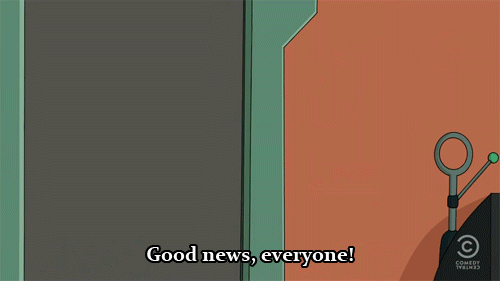
But I have news. I’ll start you off with Silver Birch Press‘ THE GREAT GATSBY ANTHOLOGY, which just came out. I have an erasure poem in the book, and there are TONS of awesome authors in here. Seriously, tons. It’s stupid. Go grab a copy!
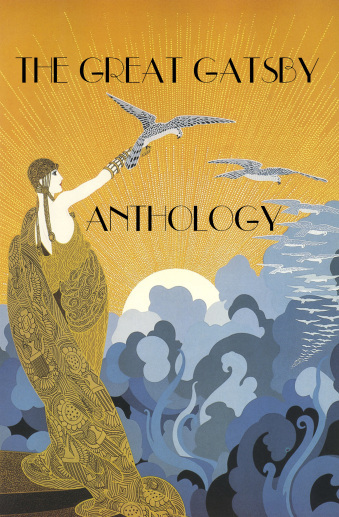
Silver Birch Press, June 2015.
And then I had a piece up at Juked online, which was pretty great. It’s an erasure from my manuscript PAUSE FOR AN EPIPHANY (which I’m currently sending out to publishers, huzzah!) and it’s one of my favorites — “If we had a nickel.” I used a piece from Allure to write this one. Allure has so many wonderful words in its pages.
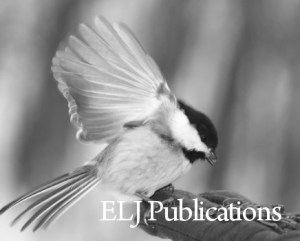
ELJ Publications.
And then, crazy as it sounds (it sounds crazy to me, anyway), ELJ Publications picked up my YA memoir in verse, THE SUMMER OF UNRAVELING. What even. I’m so grateful to these editors — Ariana D. Den Bleyker and Samantha Duncan — who have shown such faith in me. The memoir will cover several months of my senior year in high school, overlapping into my first few months of college and will discuss my experiences as a bipolar teenager before, during, and after diagnosis. I sold this on proposal, so I still have to write the bulk of the book. Which is scary. But also exhilarating. THE SUMMER OF UNRAVELING will be released in May of 2017 to coincide with National Mental Health Awareness month. ELJ is printing it under their Esperanza Editions imprint — an imprint that highlights stories of mental illness for the sake of both empowerment and education.
If you haven’t read work by my awesome, above-mentioned editors, check them out! They’re both so talented and I’m so excited that I get to work with them on a book that is so personal and that will take a lot out of me as a human and as a writer. I can’t imagine doing this book with anyone else! (They are also publishing my experimental found poetry chapbook ACOUSTIC BATTERY LIFE in January. SO EXCITED!)
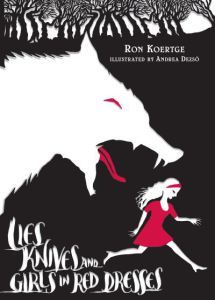
Candlewick Press, July 2012.
In other news, I just got back from July’s Austin SCBWI meeting where I had the privilege of presenting a talk on using poetry to refine your revision skills. Thank you so much to everyone who came out and especially to those who bought books! I hope folks who enjoyed my talk will also buy books by Ron Koertge and Christine Heppermann, whose narrative poems I used to illustrate my points throughout the talk.
And now, I’m off to write more things. So much planning to do before the Prince chap (PRAY, PRAY, PRAY) hits shelves in October. (Save the date: I’ll be launching the book in Austin at Malvern Books on October 25!) So many magazine deadlines to make. So many poems in my notebook that need typing up and revising. And so much delicious mango iced tea to drink. Mmmmmm….
Have a great weekend! I hope you’ll share YOUR good news with ME!





June 25, 2015
Pride Week Guest Post from e.E. Charlton-Trujillo: If Someonly Only Knew…
If someone only knew when I was twelve years-old, I saw myself reflected for the first time in the characters of THE OUTSIDERS. If someone only knew how I hungered to see more of myself in the books I was reading. Where were the Mexican-American and mixed race kids? Where were the bisexual, transgender, queer and questioning kids? Where were the gender-fluid, tomboy, popular-geek kids?
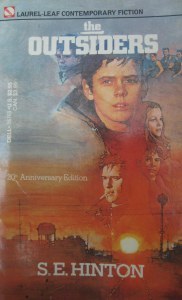
Dell Publishing, New Laurel Leaf Edition, April 1983.
Where were the kids like me?
The kids who grew up in homes that seemed solid from the street, whose lives behind pulled curtains and locked doors were a volatile and cruel place. Where self-harm became a coping mechanism. Where the struggle of being unseen, even when everyone was looking, felt paralyzing.
Where were the characters in books to reflect the challenges of my emerging sexual identity? To mirror a truth similar to mine while living in a town of 5,036 plus two stray dogs and a Pizza Hut. The restaurant we drove in circles around Friday nights after football games. Girls hanging out the back of truck beds. Guys cruising in their parents’ Buick or mini-van (the latter would never be cool).
Girls flirting with boys.
Boys flirting with girls.
I wanted to flirt with both, and often more with girls.
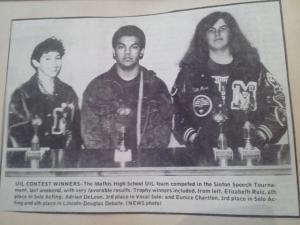
Teen e.E. in her local paper.
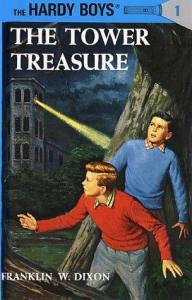
Grosset & Dunlap, June 1959.
I flirted with boys on those Friday nights though because there were no books to show me it was okay to consider other. And I searched for other.
Cautiously, I combed the small stacks of broke back book spines in the public and school libraries. I could go on an adventure with THE HARDY BOYS (story way before my time) or discover the scientific reasons for Texas weather.
I could read Highlights Magazine, or the COLLECTED WORKS OF ROBERT FROST.
But ANNIE ON MY MIND would never be shelved in my hometown.
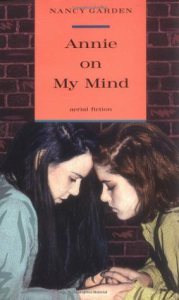
Farrar, Straus, & Giroux, 1982.
There were also no movies or television programs to mirror to me the possibility of other. The gay character on Dynasty was killed. Gay or lesbian films were nonexistent on the shelves of Video Arts & More.
A group of friends mocked a teacher named Mr. J (yeah, that’s not his real name) for being a “faggot.” That was my formal introduction to the word. Mr. J was highly effeminate and some kids said he was a child molester. He had never committed a crime against any child. He was gay. End of story.
Where were the books that gave depth and truth to a gay teacher? One who was normalized, not criminalized?
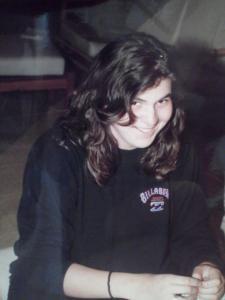
Young e.E.
If someone only knew how hard it was to not feel complete because there were no stories like mine, then they would know why I am so passionate about stories of diversity. Why it is so necessary to have kids like all of us in books.
Kids who exist somewhere on the LGBTQ rainbow. Kids who are mixed race, black, Hmong, Native American. Kids who are Jewish, Catholic, agnostic. Kids who are having a human experience in a diverse world that isn’t always sweetness and apple pies. Sometimes their world is complicated by race and class. Sometimes it is complicated by religion and sexual orientation. Sometimes it is complicated by guns and fear and hate and things we can’t always fully understand.
This world is not an easy one.
This world is not an ugly one.
This world is a place for all kinds of kids’ stories.
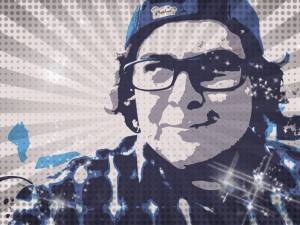
e.E. the activist.
If someone only knew that they weren’t alone in their struggle, maybe they would be more willing to share their own story.
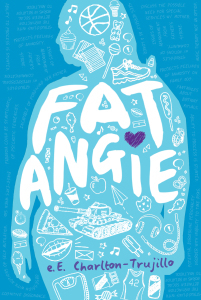
Candlewick Press, March 2013.
And in sharing their story, might share a truth that could motivate and inspire others, which in turn might help ignite change. Maybe they’d talk about a moment when they were bullied, or were the bully, how a moment of clarity or kindness lifted them out of that place. Maybe they’d share what it was like to feel alone when a loved one died of cancer, only to discover that others shared and understood that experience. If someone only knew, maybe they’d reach out with their voice instead of writing a suicide note.
When we see ourselves in a piece of art, we recognize that we have a voice that can be heard.
So …
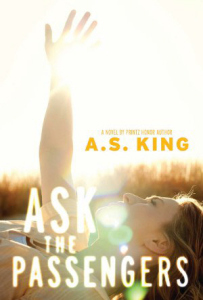
Little, Brown Books for Young Readers, October 2012.
When I reflect on growing up without books for a kid like me, I celebrate how fortunate young people are today. To be able to still be empowered by THE OUTSIDERS and A.S. King’s ASK THE PASSENGERS. Where kids can pick-up BEAUTIFUL MUSIC FOR UGLY CHILDREN and ANNIE ON MY MIND.
The library stacks continue to expand their shelves with LGBTQ books, giving young people unprecedented access to a world that closely matches their own. This is so important, because as author C.S. Lewis said: “We read to know we are not alone.”
And we do.
Reading is how we find our tribe and our truth. One book at a time.
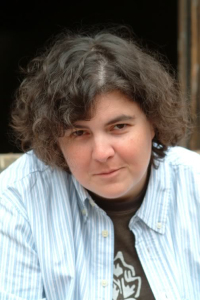
e.E Charlton-Trujillo.
Author, filmmaker and youth activist e.E. Charlton-Trujillo is the recipient of the American Library Association’s 2014 Stonewall Award for her third novel, FAT ANGIE. In 2013, she embarked on a self-funded book tour across the U.S. to empower at-risk youth via free writing workshops. The feature documentary At-Risk Summer chronicles this experience, showcasing inspiring stories from youth, educators and award-winning authors: A.S. King, Meg Medina, Laurie Halse Anderson, Kathy Erskine, Matt de La Peña, Ellen Hopkins, Pat Zietlow Miller and Michelle Embree. Continuing the empowerment of at-risk youth, Charlton-Trujillo and author C.G. Watson co-founded the non-profit Never Counted Out. Charlton-Trujillo’s fourth novel, WHEN WE WAS FIERCE, will be published in 2016 by Candlewick Press.
Never Counted Out Challenges American Teens:
The prompt If Someone Only Knew… featured in this blog is an example of a challenge that Charlton-Trujillo and NCO have extended to teens across America. Kids are encouraged to submit essays, photography, mini-graphic novels and more. If selected, the art will be published with a pen name for online and bound. They want to hear young people’s truths!
For additional information, visit: www.nevercountedout.com
At-Risk Summer Trailer: https://vimeo.com/96545142





June 24, 2015
Pride Week Guet Post from Jon Wilson: Gay Pride’s Past: An author attempts to maintain a cynical attitude regarding contemporary Pride Celebrations
So, it’s June. Again.
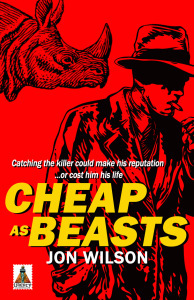
Bold Strokes Books, February 2015.
Where I live that means it’s unbearably hot—not sidewalks-are-melting hot, but at-least-two-electric-fans-must-be-blowing-on-me-to-get-any-sleep hot. Movie theatres are full of kids even for the matinees. Most of my regular tv programs are on hiatus and I’m stuck with secondary summer fare and CBS’s abomination (or is it ‘epitome of the reality television genre’?) Big Brother. Oh, and right there at the end of the month is my sister’s birthday, reminding me, as my own birthday did six months earlier, that we’re not getting any younger.
I’m a bit embarrassed to admit that for the past several years it’s taken someone reminding me to recognize it’s also Pride month. Partly that’s because I live in a small central valley town in California. No one here celebrates Pride in any manner that doesn’t involve at least 45 minutes of drive time. Our local PBS station, KVIE, does run the occasional LGBT-themed program, but if they run it with fanfare, I somehow manage to miss it. But mostly I forget because I’m old—not ‘senior-moment’ old, but…Well, I forget.
It wasn’t always this way. I was young once. I have photos to prove it. They also prove that I was once thin and, sadly, lacked both decorum and shame. Also, I bleached my hair.
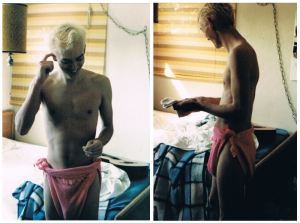
Embarassing photos from misspent youth.
That photo was taken when I was in college, or at least supposed to be in college. I was living in San Diego. I owned clothes and often wore them. I worked as a towel boy at a legendary bath house. That last is not a joke. It was a different time.
Having grown up—a pale, skinny kid into Broadway shows—in the same small town I now inhabit, relocating to San Diego was rather freeing. Actually freeing doesn’t begin to do the sensation justice. There’s another word I’m looking for and, if I wasn’t having a second senior-moment…Oh, right, LIBERATING!
I made a shocking discovery while composing this essay. According to wikipedia, “The gay liberation movement…[lasted from]…the late 1960s through the mid 1980s”. And “…by the early 1990s the radicalism of gay liberation was becoming eclipsed in the mainstream by newly-out, assimilationist, white gay men who stressed civil rights and mainstream politics.”
From wikipedia’s ‘Gay Pride‘ page:
“In the 1980s there was a major cultural shift in the Stonewall Riot commemorations. The previous loosely organized, grassroots marches and parades were taken over by more organized and less radical elements of the gay community. The marches began dropping “Liberation” and “Freedom” from their names under pressure from more conservative members of the community, replacing them with the philosophy of “Gay Pride”.”
I share what I consider a rational skepticism for wikipedia as authority, but the above quotations generally hew to history as I recollect from having lived it.
I attended my first Gay Parade in Los Angeles in 1987. It was long. I remember someone who wasn’t attending for the first time remarking on how incredibly long it was. The memory includes a certain jubilation in the speaker’s voice. The length of the parade signified something for him. Pride? Possibly. But I lean more toward the high number of marchers and floats acting as a sort of affirmation. For him. For me. And for the other spectators and even the marchers and the people on the floats. Of course, this is my own memory, and is, necessarily, cast through the prism of my own capricious prejudices. And I suppose it could be argued that pride and affirmation might occupy common ground. But really, I’m digressing with this whole length of the parade tangent because, honestly, I don’t remember anything about the parade at all. I remember the anti-gay protesters.
I attended with my best friend from high school, a prissy-looking rough and tumble lesbian named Margaret. As the parade quite literally passed us by, we stood exchanging words with a group of religious wingnuts the police had cordoned into a small staging area for their own safety. Also, or so it seemed to Margaret and myself, to make it easier for us to find them. We had a blast. I’m not exaggerating when I say we stayed there, lambasting these folks, until the parade ended and the crowds dispersed. And we loved every sweltering minute of it. Of course, that’s my own prejudicial prism again. I’ve been told such behavior also reenforces the negative view such people have of us (us being LGBT people, I suppose). Okay, that’s a straw man, because, duh, pretty much anything we might have done was going to reenforce their negative view of us. What seemed important to me was that it showed we were willing to stand up to them. To not cower and submit to their judgement. We were free—liberated.
Not long after that, Margaret and I joined ACT-UP LA—come on, we were made for it. With that contingent, we attended the ill-fated original Orange County Gay Pride Festival, held in Santa Ana in 1989. Unlike in LA, the police were on the other side of that one and a brawl broke out. The gates to the festival were shut and locked (Margaret was inside and I was outside) and gay detainees were held for a half hour while one of the organizers entreated them to send their rebel-rouser friends home. Because seriously, it was us causing the trouble, and not, say, the guys there (roaming about freely) with the big signs telling us we were going to burn in hell. I got hit with a nightstick. Eh, now I write stories about a gay PI who occasionally has run-ins with the police. At least I’m able to write confidently about the experience.
I remember another pride parade: Long Beach, CA, probably that same year. The ACT-UP contingent got booed by some spectators. I distinctly recollect a man yelling at me that we ‘…give the rest of us a bad name.’ That was minor though, hardly worth mentioning. (Not to suggest I shrugged it off. I also distinctly remember stepping out of the parade to confront him. I just can’t remember what I said, so it probably wasn’t very clever.) A small crowd of actual anti-gay protestors had gathered near the festival area. We staged a kiss-in directly in front of them. And, naturally, by using the quaint hippy-dippy euphemism kiss-in, I mean me and several other game guys rolled around on the grass doing our best to simulate sex acts. Ah, youth!
It’s interesting to me, with the perspective of hindsight (and the aforementioned mental prism), how the declaration of Gay Liberation morphed into the celebration of Gay Pride while our community simultaneously fought its way through the AIDS crisis. But perhaps that’s a discussion for another time, or, at the very least, a separate essay. This was intended to be an essay about the detachment I feel from current Pride celebrations. I set out to expound on the indifference I intuit in today’s gay community to the struggles of past generations (and what that might mean for their future) and, perhaps, to wax poetically about how it mirrored—if in fact it did not stimulate—my own indifference.
Luckily for any readers who made it this far I got sidetracked, like a Dickensian villain, in reveries of the past. And, like that most famous of Dickensian villains, those reveries reminded me that for all my cynicism there is actually a connection there. Between me and the people who will be attending Pride celebrations this month. Between me and that guy up there in the photographs—the one who attended Gay Freedom Parades. (And, look, he also played guitar!) Maybe even between me and the LGBT kids in small towns all across the world waiting to be liberated. Get up, go out. Dance. I may sit this one out, but I’ll be thinking of you, smiling.
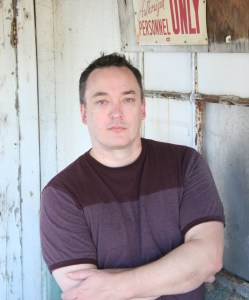
Jon Wilson.
Jon Wilson writes mostly historical fiction. His latest series features Gay PI Declan Colette. The first book, CHEAP AS BEASTS, was dedicated to his lifelong chum, Margaret, whose adventures he’s related above. The next book, EVERY UNWORTHY THING, is coming in November from Bold Strokes Books. Find out more at http://jonwilsonauthor.blogspot.com/





June 23, 2015
Pride Week Guest Post from Cheryl Rainfield: Why LGBTQ Pride and LGBTQ Books Are Needed
I once overheard someone say that Pride Week was a giant party and why wasn’t there a party for them (heterosexuals). It may look like a party—we certainly work hard at celebrating and connecting with friends and loved ones, and at being proud of who we are—but many of us in the LGBTQ (Lesbian, Gay, Bi, Trans, Queer/Questioning) community have faced homophobia, harassment, hatred, hate violence, and some have even been murdered. It can be a struggle to be who we are in the face of hate and discrimination. It gets even harder when we are isolated or lack support, and especially for teens who may lack community and resources.
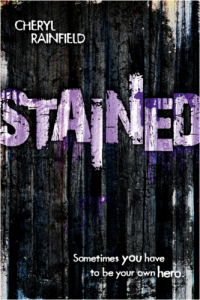
HMH Books for Young Readers, October 2013.
Many LGBTQ teens are afraid to come out to their families or friends because they may be bullied, attacked, kicked out of their families and homes, or killed. Even in the US, Canada, and the UK, there are still queer youth (and adults) who are stalked, bullied, harassed, beaten, raped, and/or murdered for who we are and who we love. (http://76crimes.com/100s-die-in-homophobic-anti-gay-attacks-statistics-updates/ and http://www.avp.org/storage/documents/Reports/2014_HV_Report-Final.pdf) In at least seventy countries, it’s still a crime to be gay. (http://76crimes.com/76-countries-where-homosexuality-is-illegal/) Just being a teen is hard enough, with the social pressures to conform and to be liked, never mind the added pain if you’ve experienced bullying or abuse. Add in homophobia, and it’s no wonder that LGB youth are four times as likely to try to kill themselves. (http://www.thetrevorproject.org/pages/facts-about-suicide)
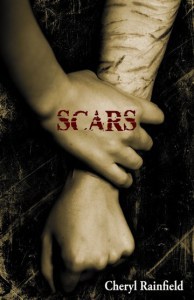
Westside Books, May 2011.
Every questioning and LGBTQ teen should have a safe place to explore and grow into their own sexuality, to be able to feel good about it and celebrate it, rather than fear the reaction of their parents, friends, or the world around them.
For some, Pride Week may be the first time they see that they’re not alone; that they see themselves in a positive light without hatred, disgust, or shame; that they can hold their lover’s hand in public without fear of backlash; or that they feel a real sense of safety, community, and belonging.
But LGBTQ Pride Week—one week out of the year—isn’t enough. We all need to see ourselves reflected in popular culture—through books, comics, TV shows, movies, magazines, and ads—to help us know that we’re not alone, that we’re okay as we are, and for LGBTQ people especially to help fight homophobia and embrace who we are. There are some LGBTQ media, but not enough to reflect our real world, and teens in isolated or conservative areas or with homophobic parents or communites may have a hard time finding resources.
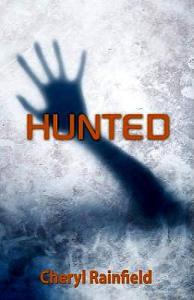
WestSide Books, December 2011.
Many queer and questioning teens don’t have support around them, don’t have anyone they can talk to, and books may be their first or only way to find someone—a character—like them. I think we need many more LGBTQ books, and especially lesbian and trans books (I’ve found there are usually more gay-focused than lesbian books available). Books where the teen characters are simply LGBTQ, and the story line is about another issue (which helps normalize us), as well as more YA LGBTQ romance. Books that I hope any reader will want to pick up, regardless of their sexuality. Hey, I read books with both heterosexual and LGBTQ characters all the time; I don’t discriminate based on sexuality. I just enjoy a good book.
I make sure to have LGBTQ characters in all the books I write, whether they are the main character or secondary characters. It’s important to me. As a queer teen, I struggled to find lesbian characters in books, movies, and TV where the lesbians didn’t kill themselves or end up unhappy. I found very few—only one teen book that had a lesbian character that I can remember—Annie On My Mind by Nancy Garden. This has changed over the years; there are more LGBTQ YA books now, but there still aren’t enough, and in so many books even LGBTQ background characters are mysteriously missing. I have been delighted to see more and more heterosexual writers bring LGBTQ characters into their books. I hope someday soon we’ll see a greater number of books reflecting the world we live in, with characters who are LGBTQ, and of different cultures and races, disabilities and abilities, mental health issues, and everything that makes up all of us.
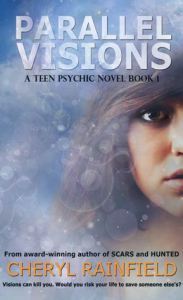
Cheryl Rainfield, November 2012.
Books give hope. I desperately needed books that reflected my experiences as a queer abused teen; they helped me survive. And books can save lives. And I know that from the many reader letters I’ve received; many tell me that after reading one of my books it’s the first time they talked to someone about being queer, or abused, or even that my book kept them from killing themselves. If you are or know someone who is part of the LGBTQ community, I hope you’ll buy, read, or give some YA LGBTQ books. You can find many here:
GAY YA: LGBTQIA+ Characters In Young Adult Fiction: http://www.gayya.org/
LGBT YA via YA author Malinda Lo: http://www.malindalo.com/2013/11/my-guide-to-lgbt-ya/
A Guide To YA Novels With LGBT Characters via YALSA: http://www.yalsa.ala.org/thehub/2013/08/06/a-guide-to-ya-novels-with-lgbtq-characters/
I’m Here, I’m Queer, What The Hell Do I Read? via Lee Wind: http://www.leewind.org/
LGBT YA Reviews: http://lgbt-ya.tumblr.com/
I hope you accept and celebrate who you are and who you love, help others do the same, and find many people who love and accept you for the beautiful person you are.
Happy Pride!
If you need to talk to someone:
US:
The Trevor Project http://www.thetrevorproject.org/ Crisis and suicide intervention for LGBTQ youth
GLBT National Center http://www.glbthotline.org/
Canada
LGBT Youthline http://www.youthline.ca/ Confidential support for LGBTQ youth
Kids Help Phone http://org.kidshelpphone.ca/
UK
London Lesbian and Gay Switchboard http://www.llgs.org.uk/
International
International crisis and suicide helplines https://en.wikipedia.org/wiki/List_of_suicide_crisis_lines
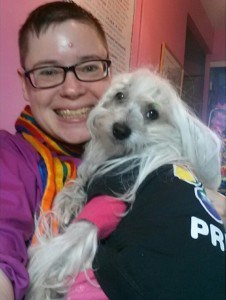
Cheryl and her dog, Petal!
Cheryl Rainfield is the author of the award-winning SCARS, a novel about a queer teen sexual abuse survivor who uses self-harm to cope; the award-winning HUNTED, a novel about a teen telepath in a world where any paranormal power is illegal; STAINED, about a teen who is abducted and must rescue herself; and PARALLEL VISIONS, about a teen who sees visions. Cheryl Rainfield is a lesbian feminist, incest and ritual abuse survivor, and an avid reader and writer. She lives in Toronto with her little dog Petal.
Cheryl Rainfield has been said to write with “great empathy and compassion” (VOYA) and to write stories that “can, perhaps, save a life.” (CM Magazine) SLJ said of her work: “[readers] will be on the edge of their seats.”
You can find Cheryl on her website CherylRainfield.com or her blog http://www.CherylRainfield.com/blog, on Twitter: http://www.Twitter.com/CherylRainfield, Instagram: http://www.Instagram.com/CherylRainfield, and FaceBook http://www.facebook.com/CherylRainfield.






